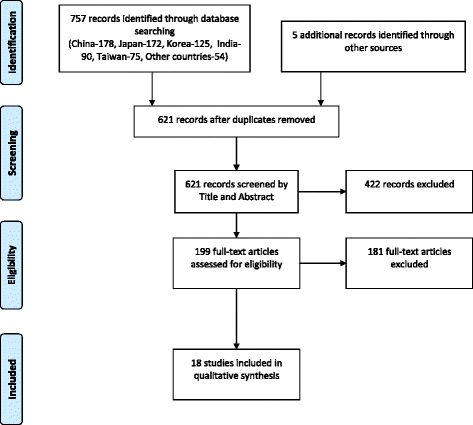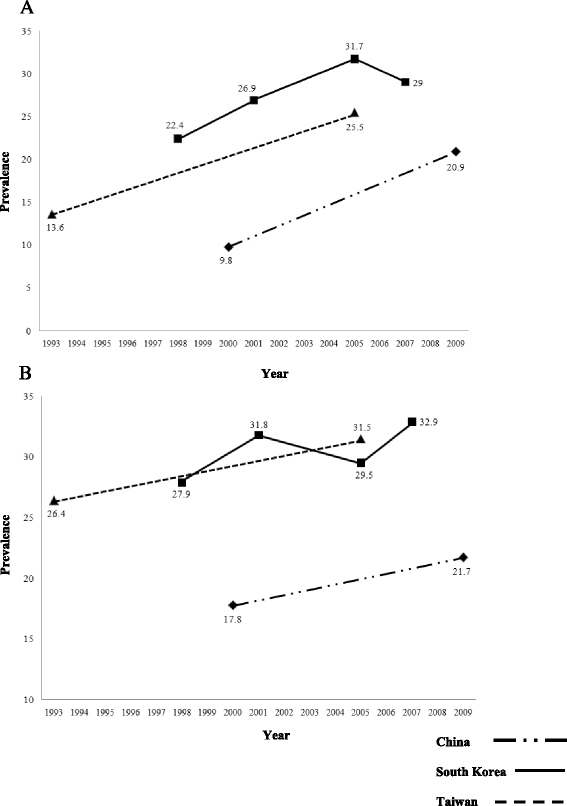Prevalence and trends of metabolic syndrome among adults in the asia-pacific region: a systematic review
- PMID: 28109251
- PMCID: PMC5251315
- DOI: 10.1186/s12889-017-4041-1
Prevalence and trends of metabolic syndrome among adults in the asia-pacific region: a systematic review
Abstract
Background: The Asia-Pacific region is home to nearly half of the world's population. The region has seen a recent rapid increase in the prevalence of obesity, type-2 diabetes and cardiovascular disease. The present systematic review summarizes the recent prevalence and trends of Metabolic Syndrome (MetS) among adults in countries of the Asia-Pacific Region.
Methods: Data on MetS in Asia-Pacific countries were obtained using a stepwise process by searching the online Medline database using MeSH terms 'Metabolic Syndrome X' and 'Epidemiology/EP'. For the purpose of describing prevalence data for the individual countries, studies that were most recent, nationally representative or with the largest sample size were included. When evaluating secular trends in prevalence in a country we only considered studies that evaluated the temporal change in prevalence between similar populations, prospective studies based on the same population or National surveys conducted during different time periods.
Results: This literature search yielded a total of 757 articles, and five additional article were identified by screening of reference lists. From this total, 18 studies were eligible to be included in the final analysis. Of the 51 Asia-Pacific countries (WHO) we only located data for 15. There was wide between country variation in prevalence of MetS. A national survey from Philippines conducted in 2003 revealed the lowest reported prevalence of 11.9% according to NCEP ATP III criteria. In contrast, the highest recorded prevalence in the region (49.0%) came from a study conducted in urban Pakistan (Karachchi, 2004). Most studies reported a higher prevalence of MetS in females and urban residents. Data on secular trends were available for China, South Korea and Taiwan. An increase in the prevalence of MetS was observed in all three countries.
Conclusion: Despite differences in methodology, diagnostic criteria and age of subjects studied, the Asia-Pacific region is facing a significant epidemic of MetS. In most countries nearly 1/5th of the adult population or more were affected by MetS with a secular increase in prevalence. Strategies aimed at primary prevention are required to ameliorate a further increase in the epidemic and for the reduction of the morbidity and mortality associated with MetS.
Keywords: Asia-Pacific; Metabolic syndrome; Prevalence; Trends.
Figures
References
-
- Amihaesei IC, Chelaru L. Metabolic syndrome a widespread threatening condition; risk factors, diagnostic criteria, therapeutic options, prevention and controversies: an overview. Rev Med Chir Soc Med Nat Iasi. 2014;118(4):896–900. - PubMed
Publication types
MeSH terms
LinkOut - more resources
Full Text Sources
Other Literature Sources
Medical



